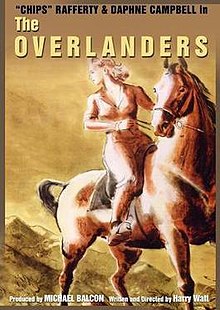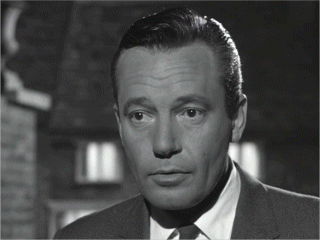
Charles William Tingwell AM, known professionally as Bud Tingwell or Charles 'Bud' Tingwell, was an Australian film, television, theatre and radio actor. One of the veterans of Australian film, he acted in his first motion picture in 1946 and went on to appear in more than 100 films and numerous TV programs in both the United Kingdom and Australia.
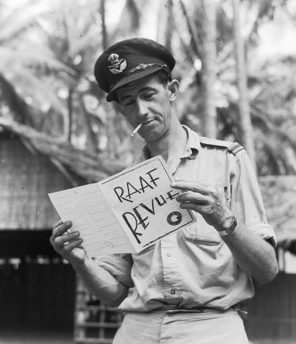
John William Pilbean Goffage MBE, known professionally as Chips Rafferty, was an Australian actor. Called "the living symbol of the typical Australian", Rafferty's career stretched from the late 1930s until he died in 1971, and during this time he performed regularly in major Australian feature films as well as appearing in British and American productions, including The Overlanders and The Sundowners. He appeared in commercials in Britain during the late 1950s, encouraging British emigration to Australia.
Ronald Grant Taylor was an English-Australian actor best known as the abrasive General Henderson in the Gerry Anderson science fiction series UFO and for his lead role in Forty Thousand Horsemen (1940).

Cinesound Productions Pty Ltd was an Australian feature film production company, established in June 1931, Cinesound developed out of a group of companies centred on Greater Union Theatres, that covered all facets of the film process, from production, to distribution and exhibition.

Smiley is a 1956 USA-British co-production comedy film directed by Anthony Kimmins and starring Colin Petersen. It was based on the 1945 novel of the same name by Moore Raymond who co-wrote the film with Kimmins. It tells the story of a young Australian boy who is determined to buy a bicycle for four pounds, and along the way he gets into many misadventures.

Eureka Stockade is a 1949 British film of the story surrounding Irish-Australian rebel and politician Peter Lalor and the gold miners' rebellion of 1854 at the Eureka Stockade in Ballarat, Victoria, in the Australian Western genre.
Raymond Egerton Harry Watt was a Scottish documentary and feature film director, who began his career working for John Grierson and Robert Flaherty.

The Rats of Tobruk is a 1944 Australian film directed by Charles Chauvel. An abridged version was released in the United States in 1951 as The Fighting Rats of Tobruk. The film follows three drover friends who enlist in the Australian Army together during World War II. Their story is based on the siege of the Libyan city of Tobruk in North Africa by Rommel's Afrika Korps. The partly Australian defenders held the city for 250 days before being relieved by British forces.

The Loves of Joanna Godden is a 1947 British historical drama film directed by Charles Frend and produced by Michael Balcon. The screenplay was written by H. E. Bates and Angus MacPhail from the novel Joanna Godden (1921) by Sheila Kaye-Smith.
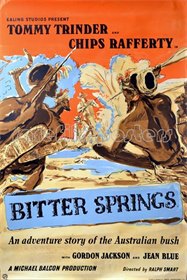
Bitter Springs is a 1950 Australian–British film directed by Ralph Smart. An Australian pioneer family leases a piece of land from the government in the Australian outback in 1900 and hires two inexperienced British men as drovers. Problems with local Aboriginal people arise over the possession of a waterhole. Much of the film was shot on location in the Flinders Ranges in South Australia
The Phantom Stockman is a 1953 Australian western film written and directed by Lee Robinson and starring Chips Rafferty, Victoria Shaw, Max Osbiston and Guy Doleman.

Forty Thousand Horsemen is a 1940 Australian war film directed by Charles Chauvel. The film tells the story of the Australian Light Horse which operated in the desert at the Sinai and Palestine campaign during World War I. It follows the adventures of three rowdy heroes in fighting and romance. The film culminates at the Battle of Beersheba which is reputedly "the last successful cavalry charge in history". The film was clearly a propaganda weapon, to aid in recruitment and lift the pride of Australians at home during World War II. It was one of the most successful Australian movies of its day. It was later remade in 1987 as The Lighthorsemen.
Come Up Smiling is a 1939 Australian comedy film starring popular American stage comedian Will Mahoney and his wife Evie Hayes. It was the only feature from Cinesound Productions not directed by Ken G. Hall.

Bush Christmas is a 1947 Australian–British comedy film directed by Ralph Smart and starring Chips Rafferty. It was one of the first films from Children's Entertainment Films, later the Children's Film Foundation.
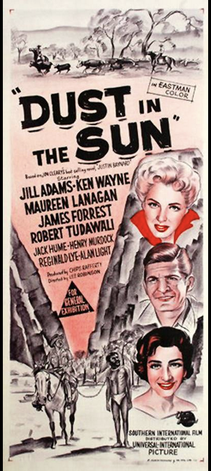
Dust in the Sun is a 1958 Australian mystery film adapted from the 1955 novel Justin Bayard by Jon Cleary and produced by the team of Lee Robinson and Chips Rafferty. The film stars British actress Jill Adams and an Indigenous Australian actor Robert Tudawali as Emu Foot.

Australian Western, also known as meat pie Western or kangaroo Western, is a genre of Western-style films or TV series set in the Australian outback or "the bush". Films about bushrangers are included in this genre. Some films categorised as meat-pie or Australian Westerns also fulfil the criteria for other genres, such as drama, revisionist Western, crime or thriller. A sub-genre of the Australian Western, the Northern, has been coined by the makers of High Ground (2020), to describe a film set in the Northern Territory that accurately depicts historical events in a fictionalised form, that has aspects of a thriller.
Pagewood Studios was a film studio in Sydney, Australia, that was used to make Australian, British and Hollywood films for 20 years.
Henry Murdoch, born as George Henry Murdock, was an Australian aboriginal actor and stockman who appeared in Australian films of the 1940s and 1950s. He was working as stockman in Rockhampton when discovered by Ralph Smart, who was helping make The Overlanders (1946). The film's director, Harry Watt, later claimed Murdoch and fellow aboriginal actor Clyde Combo "proved to be first-class actors and were exceedingly quick witted and intelligent. They certainly disproved the conventional idea that the Australian aboriginal is an animalistic caveman." Filmink said "It was Henry Murdoch who personified a specific type of role in the 1940s and 1950s, the aboriginal stockman who was a sidekick/tracker to the white hero."
John Fernside was an Australian actor who worked extensively on stage and screen from the 1910s through to 1950s. He co-starred with Chips Rafferty in two Australian films of the 1940s; The Overlanders (1946) and Bush Christmas (1947).
Daphne Campbell was an Australian actress and controversial entrant in the 1947 Miss Australia charity quest.
